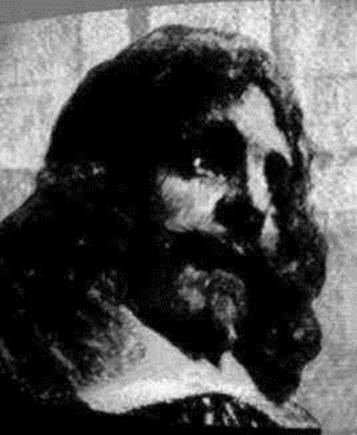


 تاريخ الرياضيات
تاريخ الرياضيات
 الرياضيات في الحضارات المختلفة
الرياضيات في الحضارات المختلفة 
 الرياضيات المتقطعة
الرياضيات المتقطعة
 الجبر
الجبر
 الهندسة
الهندسة 
 المعادلات التفاضلية و التكاملية
المعادلات التفاضلية و التكاملية 
 التحليل
التحليل
 علماء الرياضيات
علماء الرياضيات |
Read More
Date: 12-1-2016
Date: 12-1-2016
Date: 17-1-2016
|
Born: 21 February 1591 in Lyon, France
Died: September 1661 in Lyon, France

Little is known about Girard Desargues' personal life. His family (on both his mother's and his fathersearchit's side) had been very rich for several generations and had supplied lawyers and judges to the Parlement in Paris as well as to that in Lyon (then the second most important city in France).
Desargues seems to have made several extended visits to Paris in connection with a lawsuit for the recovery of a huge debt. Despite this loss, the family still owned several large houses in Lyon, a manor house (and its estate) at the nearby village of Vourles, and a small chateau surrounded by the best vineyards in the vicinity. It is thus clear that Desargues had every opportunity of acquiring a good education, could afford to buy what books he chose, and had leisure to indulge in whatever pursuits he might enjoy. In his later years, these seem to have included designing an elaborate spiral staircase, and an ingenious new form of pump, but the most important of Desargues' interests was Geometry. He invented a new, non-Greek way of doing geometry, now called 'projective' or 'modern' geometry. As a mathematician he was very good indeed: highly original and completely rigorous. He is, however, far from lucid in his mathematical style.
When in Paris, Desargues became part of the mathematical circle surrounding Marin Mersenne (1588 - 1648). This circle included Rene Descartes (1597 -1650), Étienne Pascal (1588 -1651) and his son Blaise Pascal (1623 - 1662). It was probably essentially for this limited readership of friends that Desargues prepared his mathematical works, and had them printed. Some of them were later expanded into more publishable form by Abraham Bosse (1602 -1676), who is now best remembered as an engraver, but was also a teacher of perspective.
Desargues wrote on 'practical' subjects such as perspective (1636), the cutting of stones for use in building (1640) and sundials (1640). His writings are, however, dense in content and theoretical in their approach to the subjects concerned. There is none of the wordy and elementary step-by-step explanation which one finds in texts that are truly addressed to artisans.
Desargues' most important work, the one in which he invented his new form of geometry, has the title Rough draft for an essay on the results of taking plane sections of a cone (Brouillon project d'une atteinte aux evenemens des rencontres du Cone avec un Plan). A small number of copies was printed in Paris in 1639. Only one is now known to survive, and until this was rediscovered, in 1951, Desargues' work was known only through a manuscript copy made by Philippe de la Hire (1640 - 1718). The book is short, but very dense. It begins with pencils of lines and ranges of points on a line, considers involutions of six points (Desargues does not use or define a cross ratio), gives a rigorous treatment of cases involving 'infinite' distances, and then moves on to conics, showing that they can be discussed in terms of properties that are invariant under projection. We are given a unified theory of conics.
Desargues' famous 'perspective theorem' - that when two triangles are in perspective the meets of corresponding sides are collinear - was first published in 1648, in a work on perspective by Abraham Bosse.
It is clear that, despite his determination to explain matters in the vernacular, and without direct reference to the theorems or the vocabulary of Ancient mathematicians, Desargues is well aware of the work of ancient geometers, for instance Apollonius and Pappus. His choosing to explain himself differently may perhaps be due to his recognition that his own work was also deeply indebted to the practical tradition, specifically to the study of perspective (which is a form of conical projection). It seems highly likely that it was in fact from his work on perspective and related matters that Desargues' new ideas arose. When projective geometry was reinvented, by the pupils of Gaspard Monge (1746 -1818), the reinvention was from descriptive geometry, a technique that has much in common with perspective.
Books:
Articles:



|
|
|
|
التوتر والسرطان.. علماء يحذرون من "صلة خطيرة"
|
|
|
|
|
|
|
مرآة السيارة: مدى دقة عكسها للصورة الصحيحة
|
|
|
|
|
|
|
نحو شراكة وطنية متكاملة.. الأمين العام للعتبة الحسينية يبحث مع وكيل وزارة الخارجية آفاق التعاون المؤسسي
|
|
|